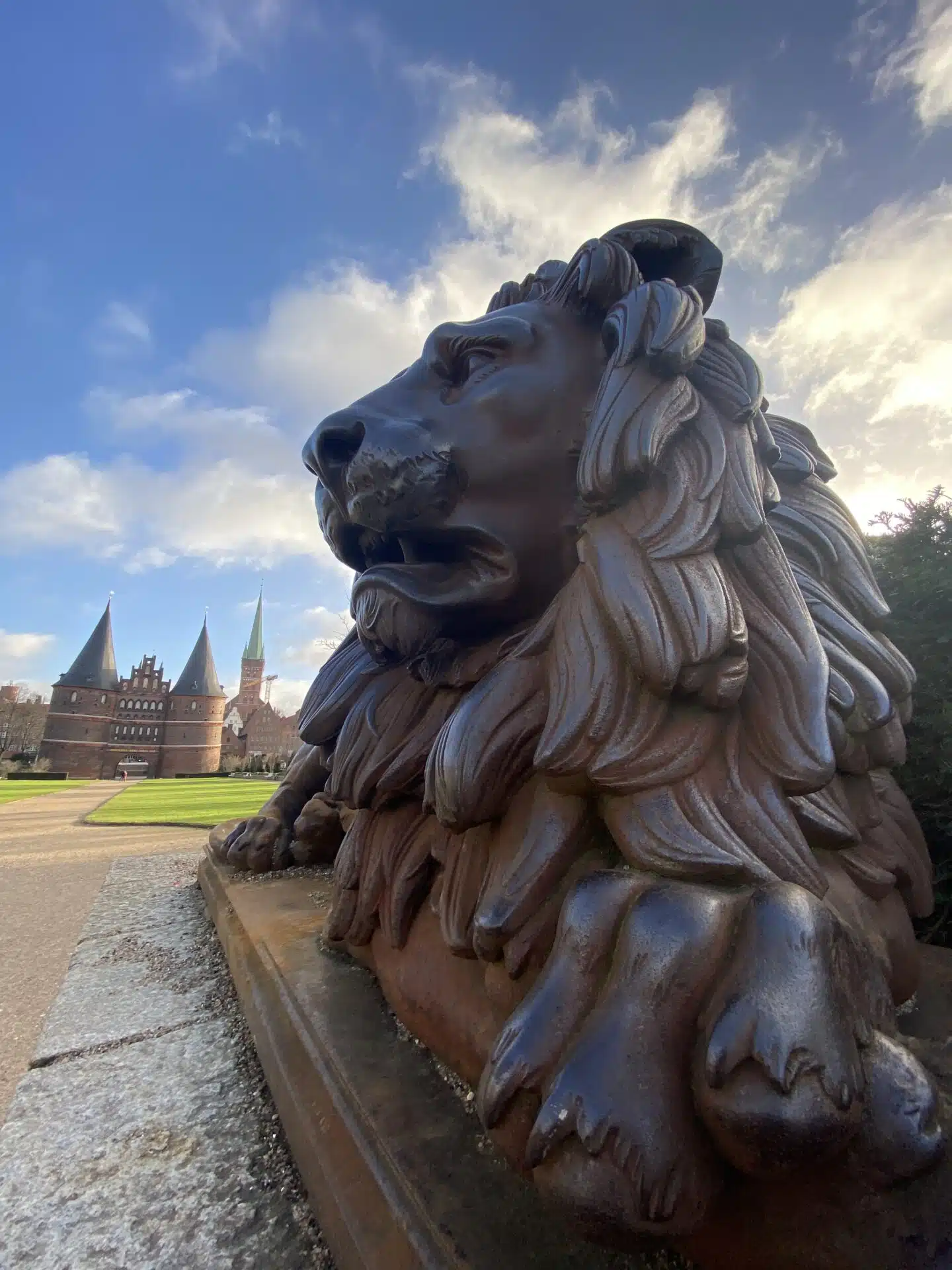There is at least one luxury hotel in every city of distinction. A meeting place for the rich and famous. As the first address for upper-class travelers, these houses often tell fascinating stories that are often closely linked to the fortunes of the respective city.
Did you know that there used to be a luxury hotel in Lübeck – much earlier than in today’s major cities? And have you ever wondered what the two Lübeck lions that flank the Holsten Gate today are all about? You can find out what the one has to do with the other in this article in our Lübeck ZWISCHENZEILEN.
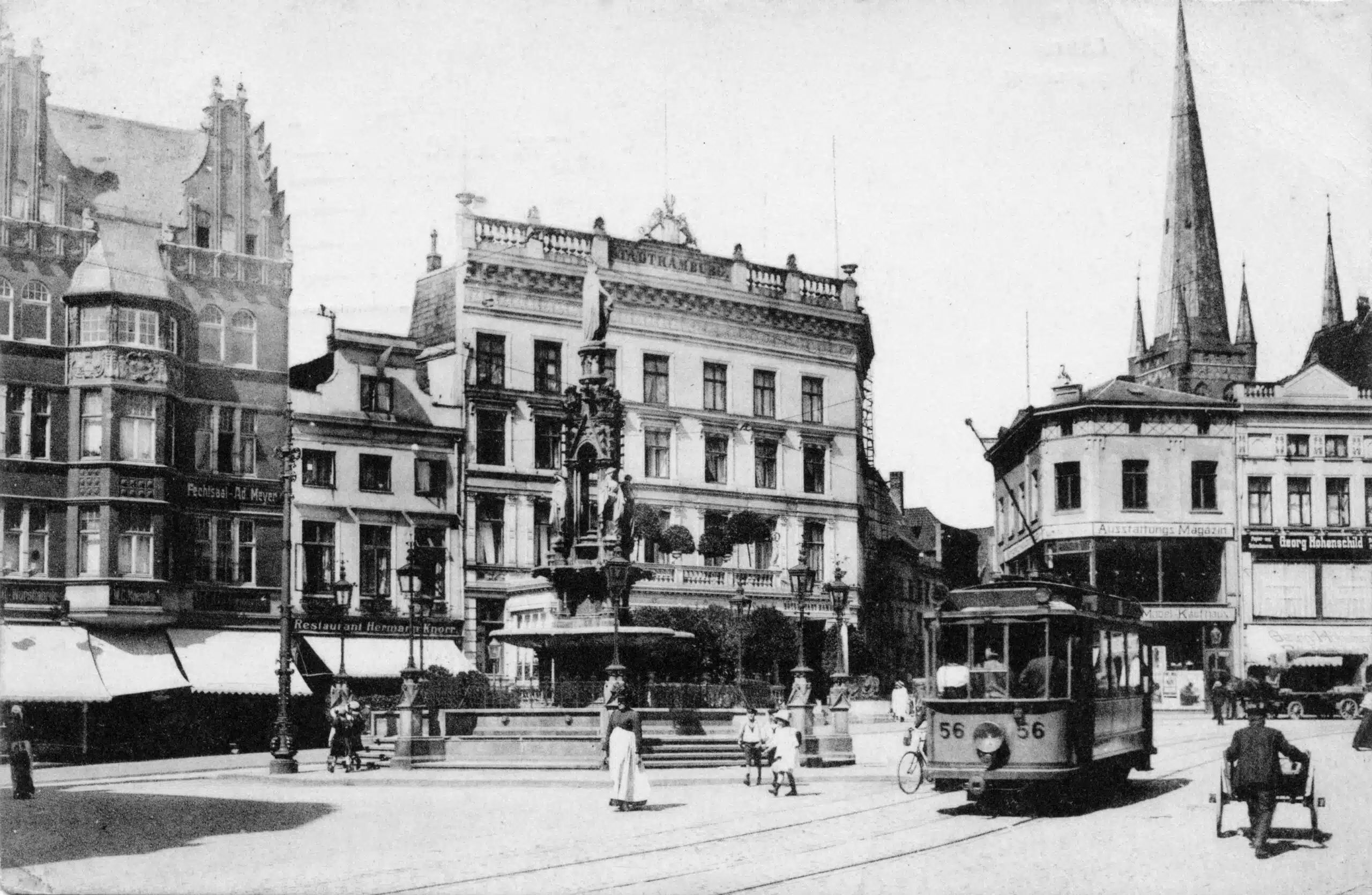
with innovations to success
We are talking about the “Hotel Stadt Hamburg“. Situated on the Klingenberg, it was once the finest address on the square and at its height was Lübeck’s largest hotel. It combined luxury, style and state-of-the-art amenities. Its fate is closely linked to the more recent development of our city. But why this name? Naming an inn after another city is not unusual and can be explained by longing and wanderlust or perhaps the owner’s homesickness. In Lübeck, there was a very pragmatic reason for the name: in 1444, the city of Hamburg bought the house on Klingenberg for 600 Lübeck pfennigs so that its delegates would have suitable accommodation during the Hanseatic Days.
First mentioned in 1519 as the “Hamburger Herberge”, the accommodation had a wine cellar and soon made a name for itself. Former famous guests included Wilhelm von Humboldt and the poet Joseph Freiherr von Eichendorff, who raved in his diary about the cosmopolitan flair and excellent service for which the Hotel Stadt Hamburg was already known at the time.
The real success story began in 1817 when Georg Theodor Pflüg took over the hotel and from then on ran it under the name “Hotel Stadt Hamburg“. Against considerable opposition from Lübeck’s business community, he had baths installed in his inn. An incredible innovation for the time, as bathing was not a matter of course in the early 19th century. In inns, travelers were offered a jug of water to wash their hands and wet their faces. Innovative hydrotherapies promised healing through water. At that time, however, baths were still an atypical luxury for a guesthouse. The barbers from Lübeck sued the owner for unfair competition, as they feared for their customers.
Meeting place for the rich and beautiful
In addition to these modern amenities, the regular steamship connections to Copenhagen, Stockholm and St. Petersburg were a key factor in the hotel’s success. Lübeck has always been a bridge between Northern and Central Europe. At the time of the Hanseatic League, this was a decisive locational advantage and the burgeoning tourism industry also benefited from it. The steamships brought wealthy travelers from northern Europe. For the Russian nobility, Travemünde was the gateway to the continent and a stopover on the way to Switzerland or France. The guest list of the “Hotel Stadt Hamburg” reads like a Who’s Who of the European upper class of the time.
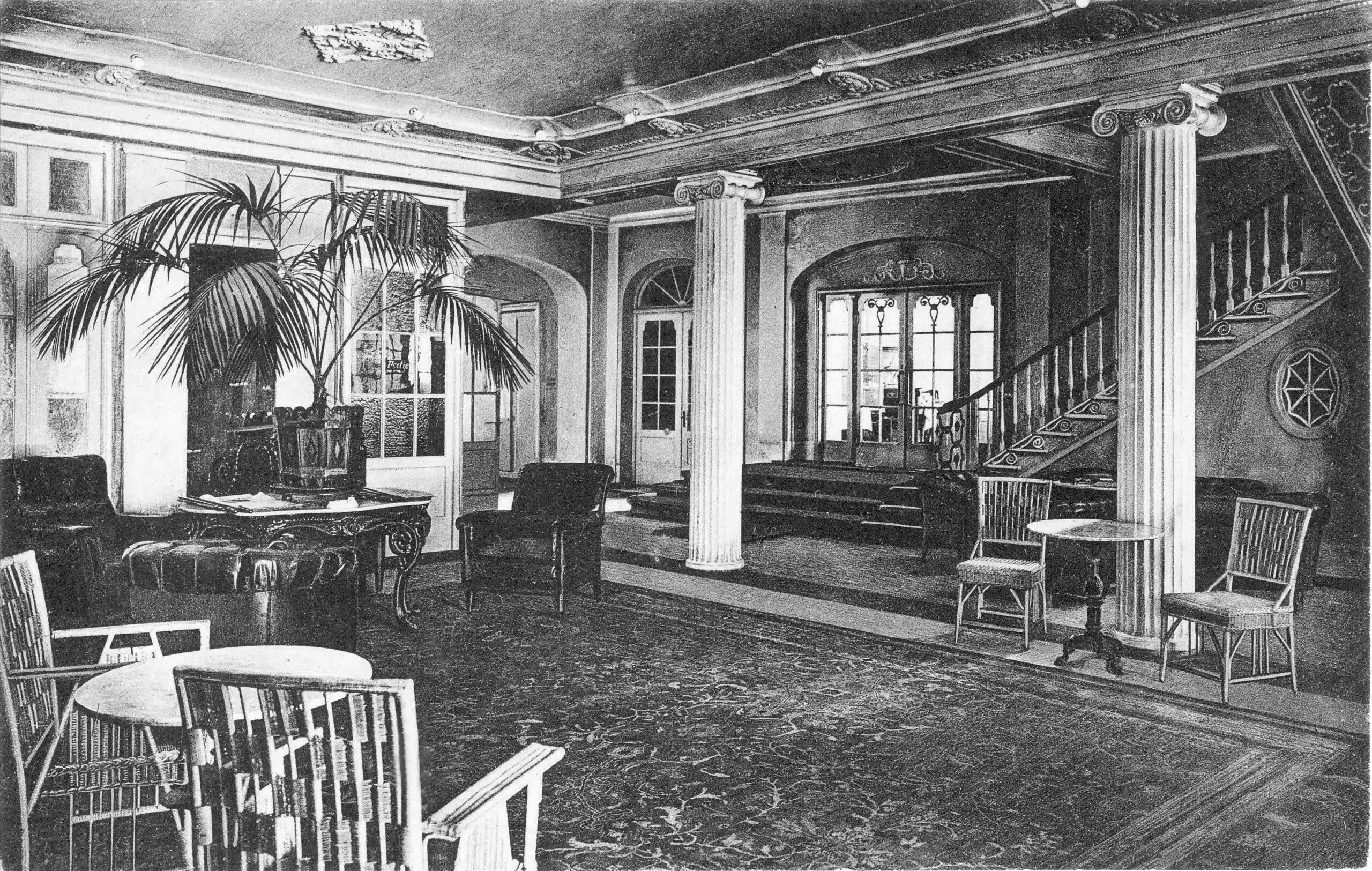
Among the most famous visitors to the “Hotel Stadt Hamburg” were the composers Carl Maria von Weber and Richard Wagner as well as the pianist Clara Schumann – then still known as Wieck. The influential entrepreneur Werner von Siemens celebrated here with his family. Crown Prince Frederick III and his wife Crown Princess Victoria of Prussia arrived on a special train from Hamburg. Prince Napoleon III. docked in his yacht “Jerôme Napoleon” in the port of Hamburg and came to the “Hotel Stadt Hamburg” for breakfast. The author Stefan Zweig spent a night here with his future wife Friederike von Winternitz.
The Russian composer Pyotr Ilyich Tchaikovsky wrote in his diary:
“Oh God, what happiness! It feels so good to be in a foreign city, in a beautiful hotel and to have a full five days’ rest.”
James Edward Marston described the “Hotel Stadt Hamburg” as early as 1833 as “one of the best in northern Germany.” The influential Baedeker travel guide – the Tripadvisor of the 19th century – listed the house from 1864. Business flourished and the hotel was constantly expanded through acquisitions and extensions. The magnificent façade facing Klingenberg was complemented by a balcony supported by columns. A wide flight of steps led up to the foyer.
The advertising at the time promised comfortable single and double rooms with hot and cold running water, bath and shower facilities. Such a hotel was never just a place to stay overnight, but always a meeting place for the top ten thousand. Instead, the “Hotel Stadt Hamburg” offered a fine wine restaurant, a bar (at times even advertised as an “American Bar”) and a hotel garden. Dances were held regularly at the weekends. Illustrious parties met in the festive rooms of the hotel – the scene of countless events, from lavish wedding balls to events of national importance, such as the royal lunch on the occasion of the imperial maneuver in 1904. There was a stable for horses, a lockable shed for the first automobiles, an elevator, a telephone connection and a telephone.
How the lions came to Lübeck…
When will the Lübeck lions finally enter this stage? Our two now famous guardians of the Holsten Gate are attributed to the sculptor Christian Daniel Rauch. They were cast in 1822/23 in the Royal Prussian Iron Foundry in Gliwice, Upper Silesia. However, they are not unique. The sleeping lion was created for the tomb of General von Scharnhorst, who died in 1813. You can still see it today at the Invalidenfriedhof cemetery in Berlin. The vigilant lion still dominates the garden of Villa Caro in Gliwicze, Poland.
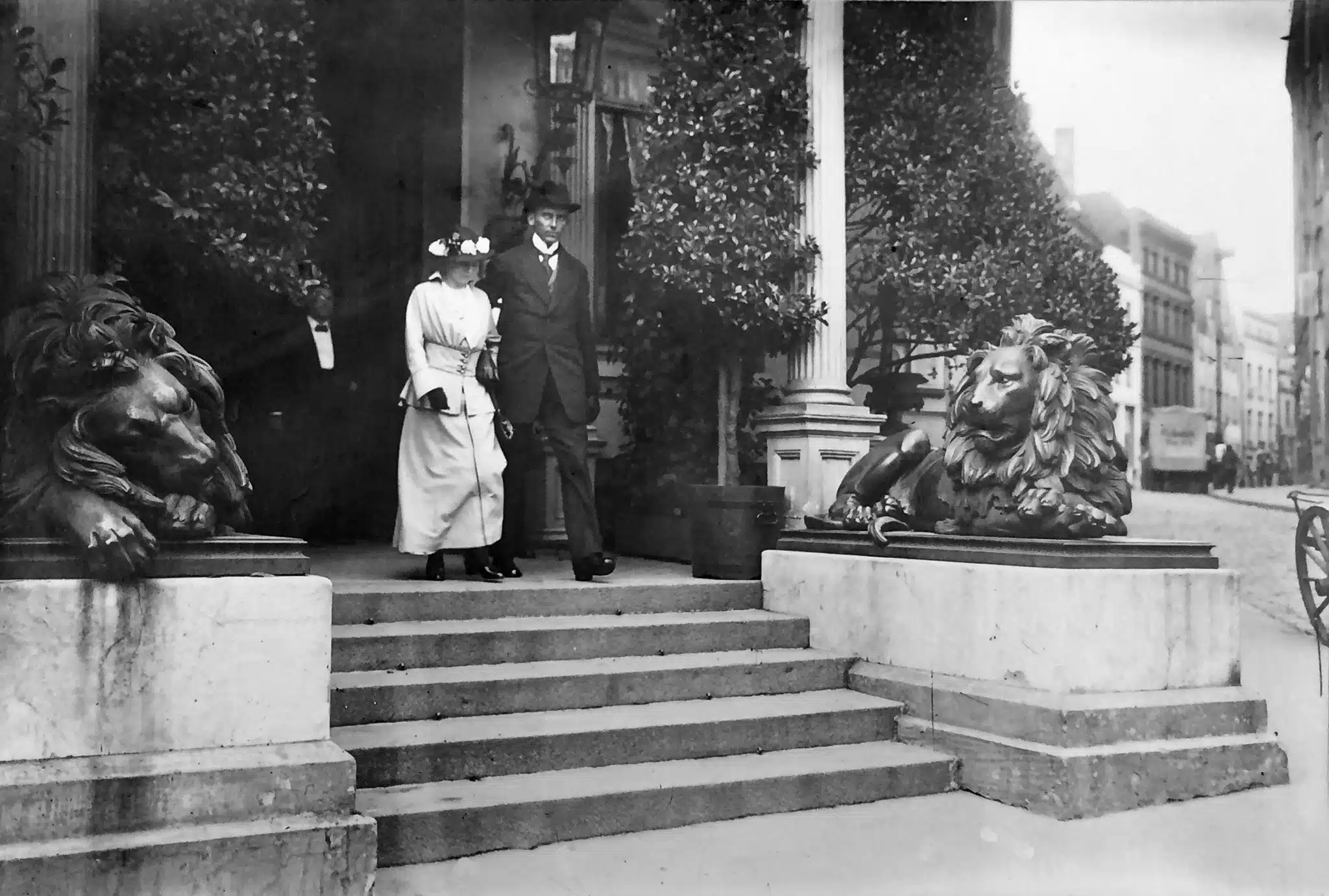
Our two Lübeck lions were ordered by the Lübeck consul Johann Daniel Jacobj from the catalog of the Royal Prussian Iron Foundry. Jacobj was the head of a Lübeck merchant family and the lions were a gift to his wife. From 1840 they kept watch in front of his house at Große Petersgrube 19( you can read more about this fascinating street in Lübeck’s old townhere ).
After a few decades, road and canal work changed the face of Petersgrube. The lions had to make way and were sold to Carl Töpfers, who in the meantime had become the owner and director of the “Hotel Stadt Hamburg”. They thus found a new, appropriate place and found their way into Lübeck’s city history. From 1873, they flanked the grand staircase of the noble hotel – one sleeping, the other with a watchful gaze over what was then Klingenberg.
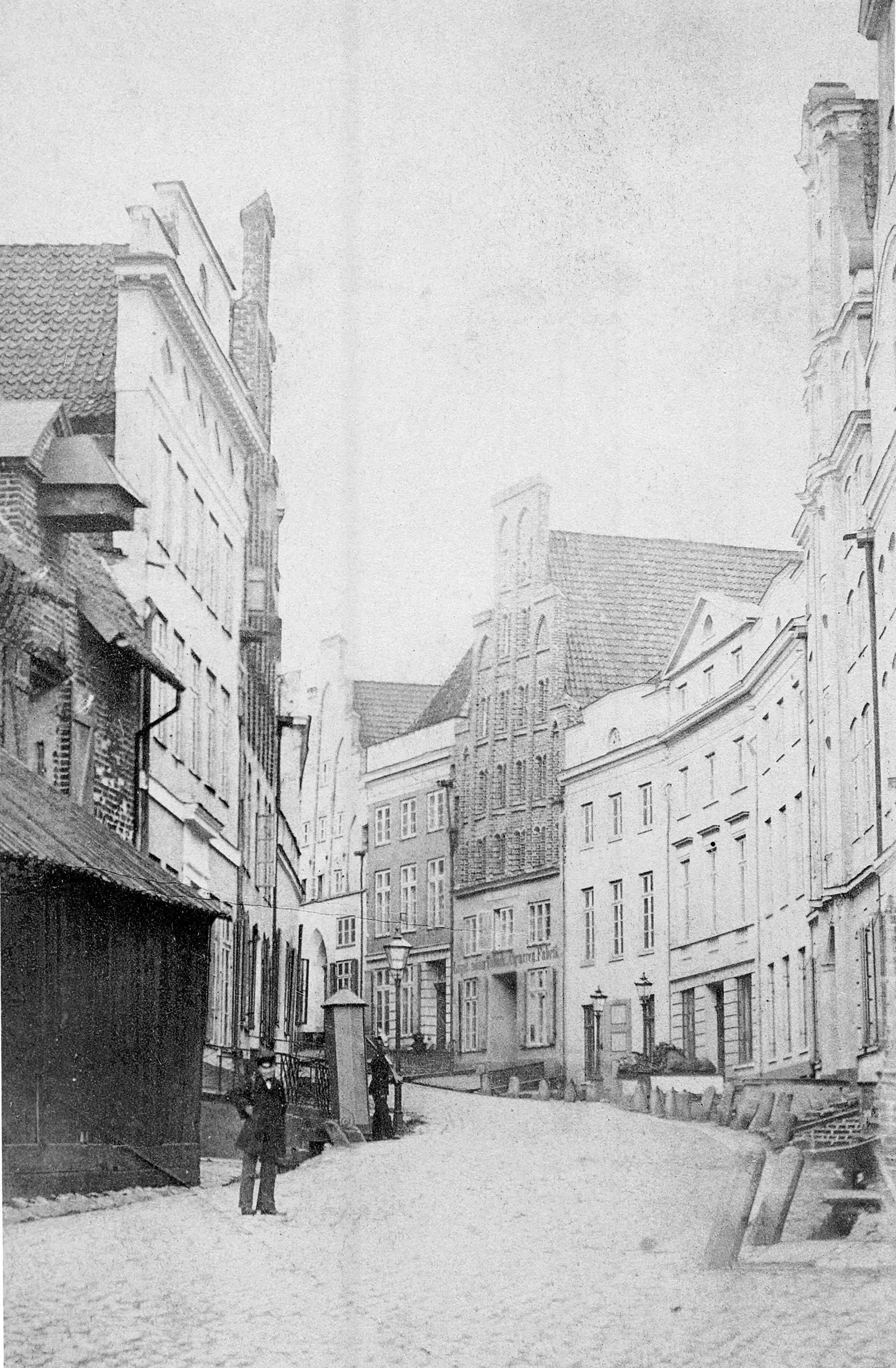
The “Hotel Stadt Hamburg” has also been immortalized in literature. When Thomas Mann traveled from Switzerland to Aalsgaard in Denmark in 1899, he stayed at the Hotel Stadt Hamburg during a stopover in his home town. This trip inspired him to write his novel “Tonio Kröger”, in which he himself recommends the famous hotel:
“Go to the city of Hamburg.” it says. “Sdadt Hamburg is well run. Costs a bit, yes, I admit, but you get your money’s worth. Good cuisine, good wines. I recommend Sdadt Hamburg to you.”
Following the recommendation, the protagonist stops off at the “Hotel Stadt Hamburg” and while he hesitates in front of the main entrance, the narrator explains: “There was the hotel, and there were the two black lions that lay in front of it and that he had been afraid of as a child.”
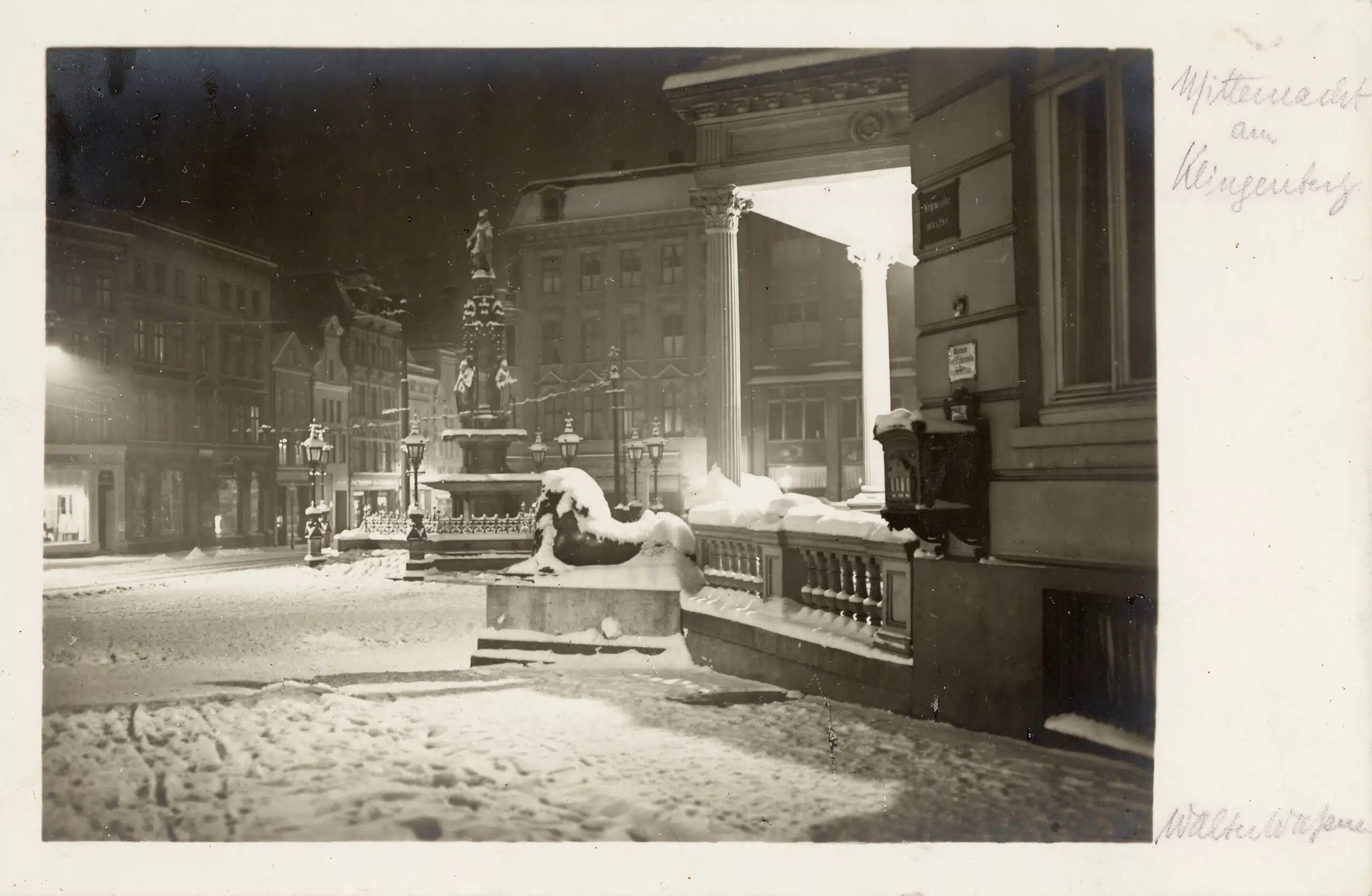
Every end is also a new beginning
The “Hotel Stadt Hamburg” was a success story. Its beginnings date back to the golden age of the Hanseatic League. Like so many other things, it came to an end on the night of Palm Sunday in 1942. The firestorm of the air raid changed the city forever. The much-praised central location was the hotel’s undoing – it was razed to the ground. On Palm Sunday morning, only the porch still protruded from the rubble: the balcony, supported by columns with Corinthian capitals and – miraculously – the two lions.
During the reconstruction, they disappeared from the public eye for a few years into the care of the Lübeck building authorities. It was not until 1957 that the two cast-iron lions found their current location. There they flank the Holsten Gate like two sentinels and welcome all travelers arriving in our city by train or long-distance bus. Its original owner, consul Johann Daniel Jakobj, would probably have been proud of the representative function of his lions. During his lifetime, he was strongly committed to the interests of our city. Connecting Lübeck to the new rail network that emerged in the 19th century was a matter close to his heart.
The history of the “Hotel Stadt Hamburg” ended on that fateful night of bombing in 1942. Our city, on the other hand, has risen from its ruins like the Phoenix bird. Perhaps it is more beautiful today than it has ever been. The fact that our two lions survived the bombs is almost metaphorical. Their promotion from Hotel Stadt Hamburg guards to ambassadors of our city is a significant career boost. I walk past them every morning. What dazzling personalities of the stories they have already let pass! Who do you think they granted access to our city? From commuters in rush hour, to children playing and riding on their backs, to state guests.
Try to read it from her inscrutable gaze. Whisper in their ear who you would like to meet for a chat in Lübeck. After everything that has happened to them, I find it hard not to see our lions as lucky charms.
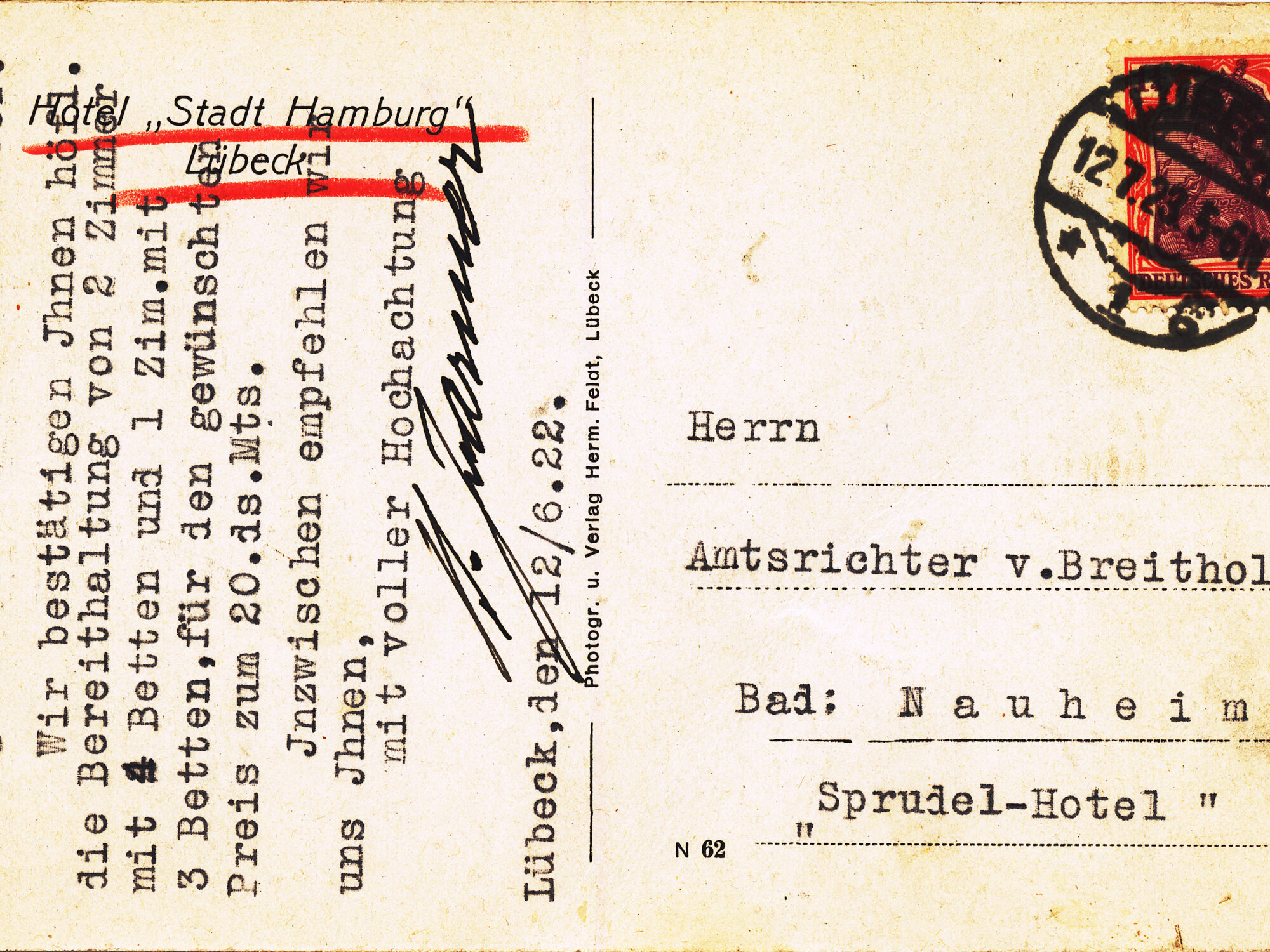
This article is based on a previously unpublished book by Guido Weinberger, which is only available in digital form. Most of the illustrations shown here are from this book. It contains many more historical details and exciting anecdotes. If you are interested in the history of the “Hotel Stadt Hamburg” and would like to find out more, please contact Guido Weinberger directly: gweinbergerde@yahoo.d e.
The Lübeck Lions
